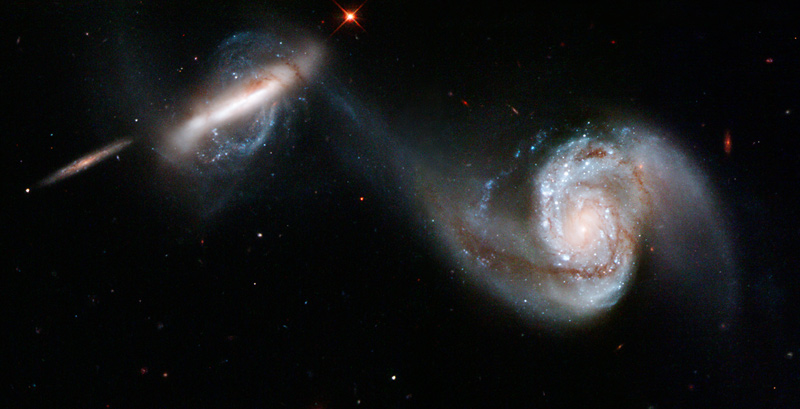Fast As A Speeding Star
Using the Hubble Space Telescope, NASA scientists have discovered stars doing something very interesting: speeding around through the interstellar medium. This came as quite a surprise especially since they were not even looking for them. This is not usual behavior for stars and brings up many new questions about what these stars are doing and why.
The scientists discovered 14 of these crazy runaway stars. Because of their movement it was harder to gather information about them but scientists were able to deduce some facts about the stars. The stars appear to be young, maybe only about a million years old. This was deduced from looking a their strong stellar winds. Most stars only have such winds when they are quite young or very old. The nebulae around the stars do not math that of those typically seen around old dying stars. And only very massive stars have winds throughout their lifespan, but these stars could not be that massive because they do not have glowing clouds of ionized gas around them. They are estimated to be about 2 to 8 solar masses.
These stars plow through regions of dense interstellar gas creating brilliant arrowhead shaped glowing bow shocks and trailing tails of glowing gas. These bow shocks are created when the strong winds coming from the stars slam into the surrounding dense gas. It’s difficult to tell their exact distance from Earth but depending on the distance these bow shocks could be 100 billion to a trillion miles wide. By studying these bow shocks we can tell that the stars are moving very quickly, about 180,000 km/hr. All stars are moving as they are orbiting around the galaxy but not nearly at these speeds, the sun for comparison moves through the galaxy at only about 13,000 km/hr. Assuming this “young” phase lasts only a million years the stars would have traveled about 160 light years.
The scientists have hypothesized that these stars were likely kicked out or ejected from massive star clusters. There’s two possible ways this expulsion could have happened. One way is if a binary system, consisting of two stars orbiting each other, had one star go supernova the explosion would eject the companion star. The other possibility would be if two binary systems or a binary and a third star collided one of the stars could have used he energy from the interaction to escape the system.
Runaway stars have been observed before, the first being found in the late 80s. However, those stars produced much larger bow shocks meaning they were probably more massive with larger stellar winds. Scientists think these new objects, the medium size stars, are probably more common since medium sized stars are more common in general and because they would be more susceptible to being ejected. These objects are difficult to find and observe because one doesn’t know where to find them or where to look for them.
Follow up studies are planned to look for more of these objects, called interlopers, and to study these recently discovered ones. Further studies will tell us more about the effects these speed demons have on the environments they pass by or interact with. Theorists and modelers will have to set to work on looking at the origins of the objects and the causes of their ejections. Pretty interesting to think about these stars being expelled from their homes now doomed to zoom around the galaxy alone.
Tags: Hubble space telescope, nasa, runaway stars
